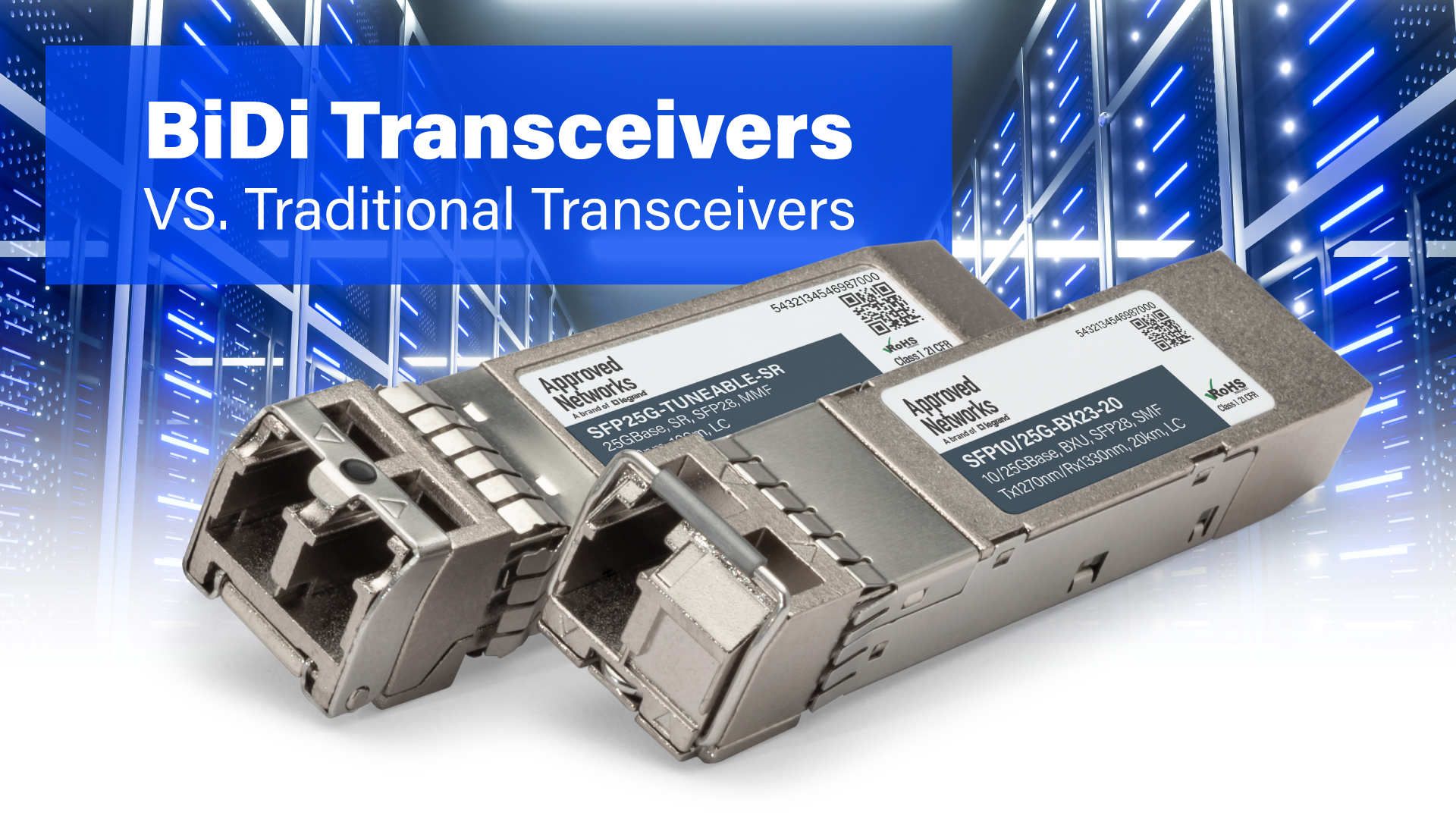BiDi Single-Fiber Transceivers vs. Traditional Transceivers: A Comprehensive Comparison
Posted by Frank Yang on May 20, 2025

In the rapidly evolving world of optical networking, the choice of transceivers can significantly impact the efficiency, cost, and performance of your network. Two prominent types of transceivers are Bi-Directional (BiDi) transceivers and traditional transceivers. This article will discuss the differences between these two technologies, highlighting the benefits and advantages of BiDi transceivers and their applications.
Understanding BiDi Single Fiber versus Traditional Transceivers
BiDi transceivers are designed to enable simultaneous bidirectional data transmission over a single strand of single-mode fiber (SMF). This is achieved using wavelength division multiplexing (WDM), which allows data to be transmitted and received on different wavelengths. This innovative approach effectively doubles the bandwidth while significantly reducing fiber infrastructure costs.
Traditional transceivers require two strands of SMF; one strand is used for transmitting data, while the other is used for receiving data. This method, while effective, is less efficient in terms of fiber usage and can lead to higher infrastructure costs.


Comparison: BiDi versus Traditional Transceivers

Key Benefits of BiDi Transceivers
- Double Fiber Efficiency: BiDi transceivers use WDM technology for simultaneous bidirectional data transmission over a single fiber strand, reducing fiber usage by 50%.
- Cost Savings: By halving the required fiber strands, BiDi transceivers lower both capital and operational expenditures, leading to significant savings in fiber infrastructure and maintenance.
- Scalable Solutions: BiDi transceivers support data rates of 1G, 10G, 25G, and 100G, offering scalable solutions for next-generation optical networking and ensuring compatibility with various network architectures.
- Versatile Applications: BiDi transceivers are flexible and adaptable, offering the following benefits across various networks:
- Broadband Access: BiDi transceivers provide high-speed internet access with reduced fiber infrastructure.
- Wireless Front-Haul/Backhaul: BiDi transceivers facilitate efficient data transmission between the core network and remote radio units, enhancing network performance and reducing costs.
- Metro Networks: BiDi transceivers deliver high-capacity data transmission over long distances with minimal fiber usage.
- Campus (Multi-Building) Networks: BiDi transceivers provide reliable and cost-effective connectivity, supporting a wide range of applications and devices for campuses such as universities, hospitals, and enterprises.
Conclusion
BiDi single fiber transceivers offer a range of benefits over traditional transceivers, including improved fiber efficiency, cost savings, scalability, and versatility. Their ability to transmit and receive data simultaneously over a single strand of fiber makes them an ideal choice for modern optical networks. Whether you're looking to upgrade an existing network or deploy a new one, BiDi transceivers provide an efficient solution for optimizing your fiber network.
Explore Approved Networks range of BiDi transceivers and discover how you can enhance your network efficiency and performance while significantly reducing costs.